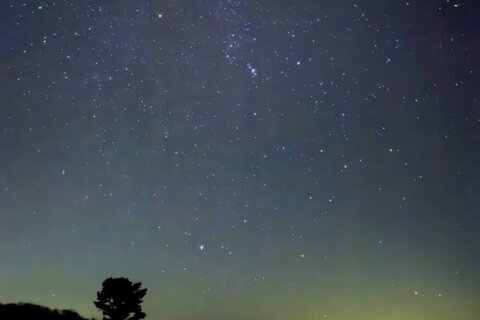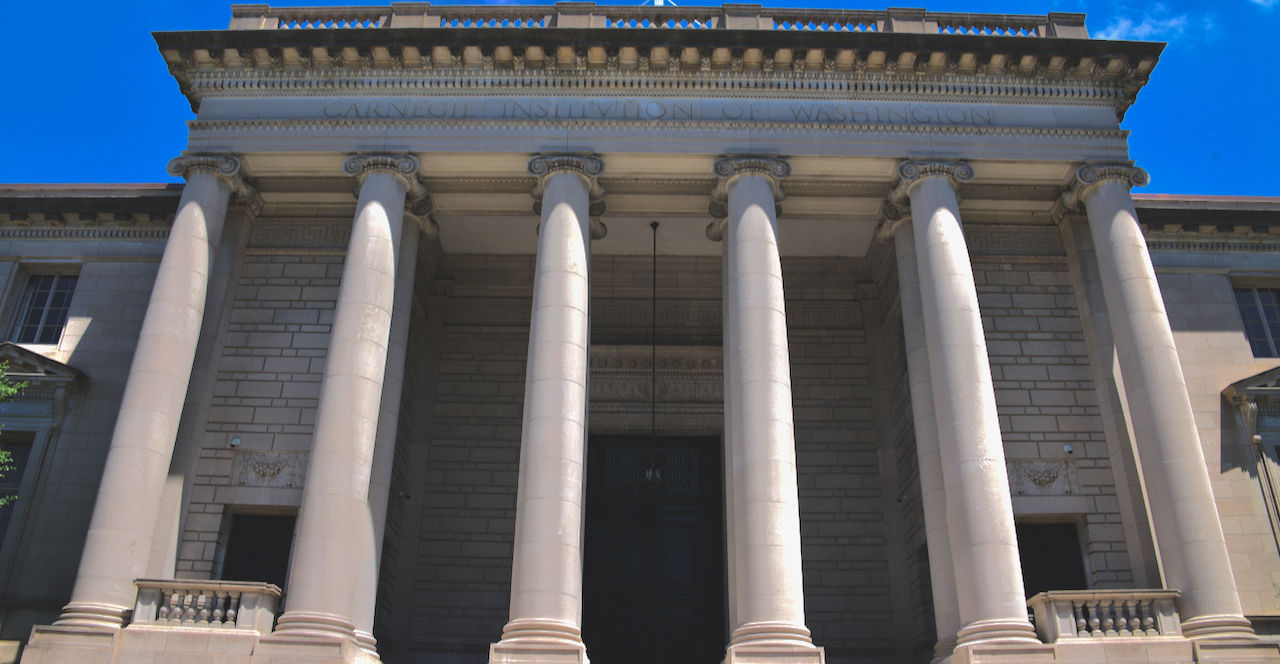
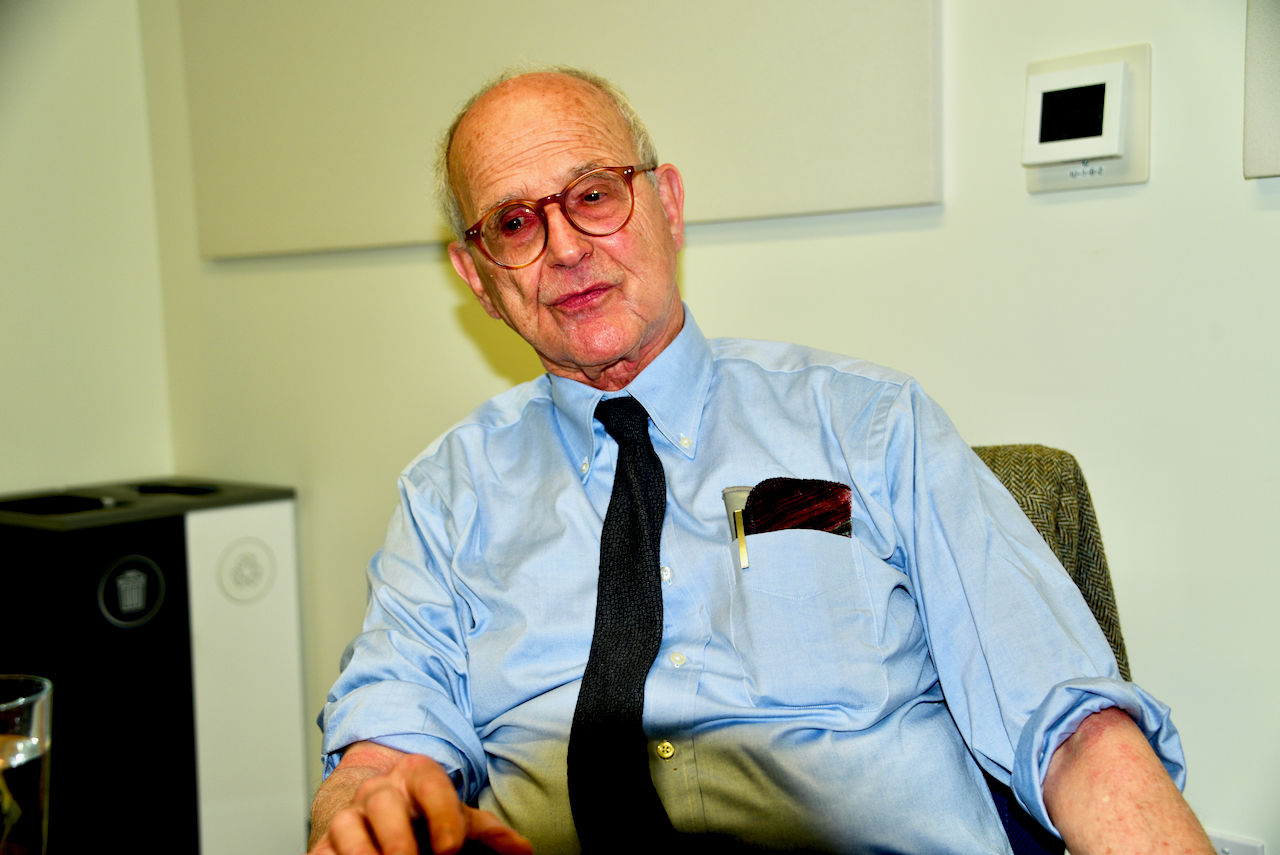
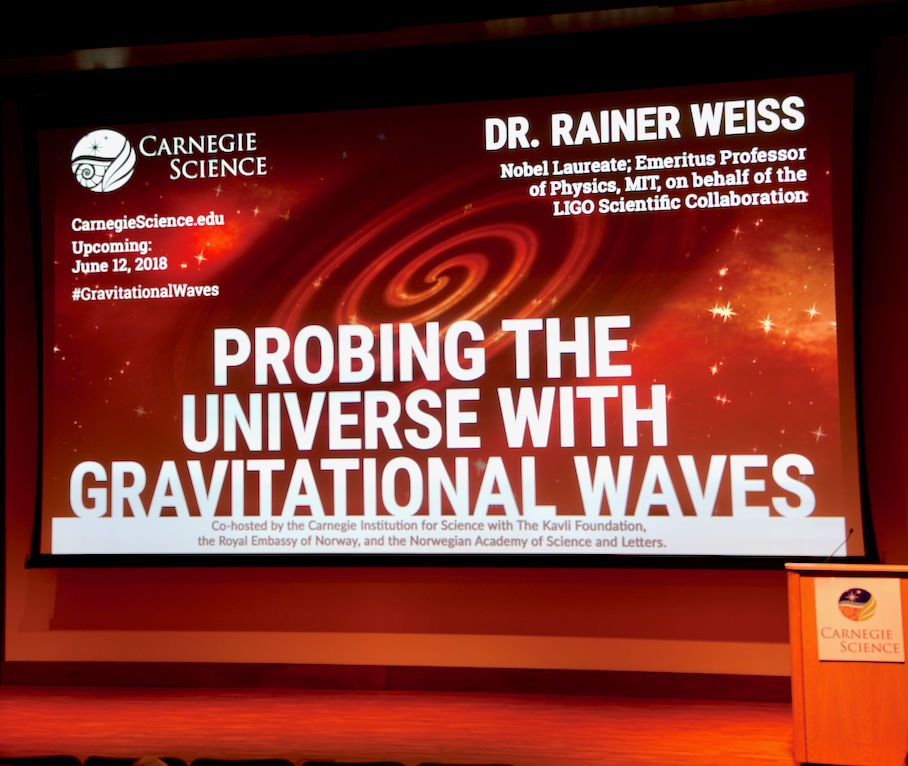

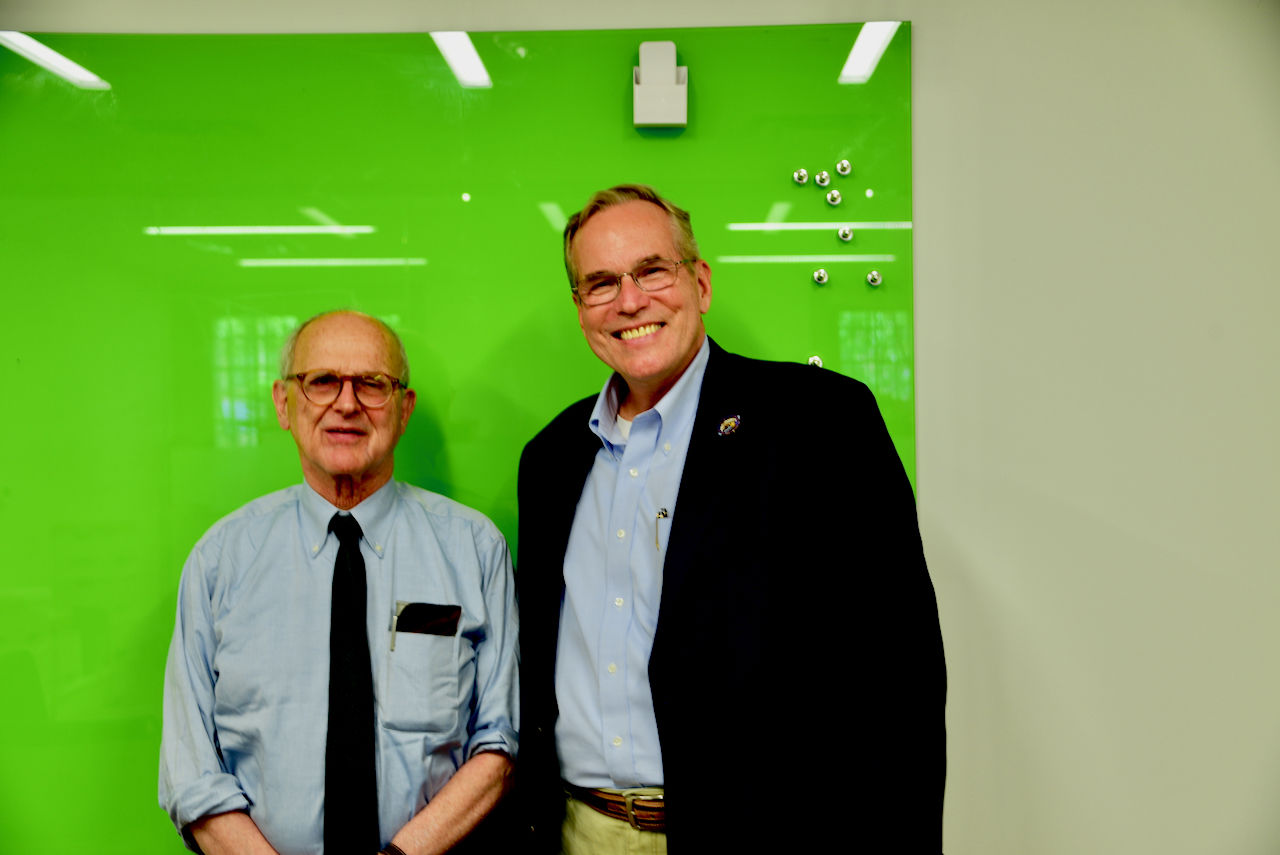
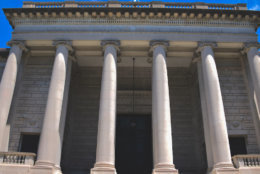
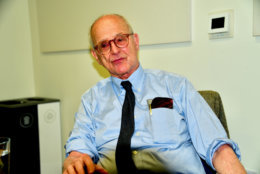
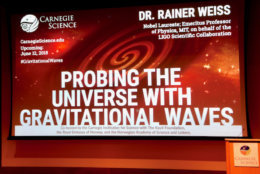
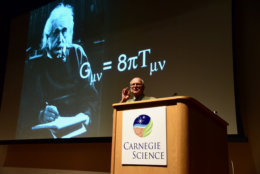
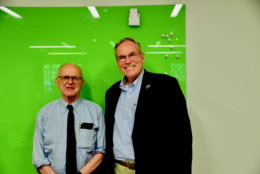
Tuesday was a big day in D.C. with the Capitals’ celebration parade. But it wasn’t the only hot ticket in town, as science fans got to see a really big show themselves by attending “Probing the Universe with Gravitational Waves”, given by Dr. Rainer Weiss, 2017 Nobel Prize Laureate-Physics. The lecture, seen here, was attended by well over 400 people.
The Carnegie Institute for Science (formerly the Carnegie Institute of Washington) co-hosted Dr. Weiss with The Kavli Foundation, the Royal Embassy of Norway, and the Norwegian Academy of Science and Letters as part of its “Capital Science Evening Lectures” series.
These free lectures bring the top scientists in their field to D.C. to share their stories and insights about science with the public. And Dr. Weiss, from the Massachusetts Institute of Technology (MIT), had some stories to tell.
As stated in his Nobel Prize citation, Dr. Weiss was awarded half ”for decisive contributions to the LIGO (Laser Interferometer Gravitational-wave Observatory) detector and the observation of gravitational waves”, and half shared jointly by his gravitational waves colleagues Dr. Kip Thorne, California Institute of Technology (Cal Tech) and Dr. Barry Barish, Cal Tech.
You may recall the historic announcement about the discovery of gravitational waves on Feb. 11, 2016, which proved that the very fabric of space-time itself, as predicted by Albert Einstein in 1915, can be distorted by the passage of gravitational waves. These observed ripples in space-time were caused by the merger of two black holes. In 2017, another historic observation was made when two neutron stars merged to create gravitational waves.
Before his lecture, I got to spend 45 minutes one-on-one with Dr. Weiss who, at 85-years-old, is spry and sharp as a tack. He is a walking encyclopedia on the science and personalities involved with gravitational waves for the past 60 years. He said 40-plus years, but I think it is 60-plus years because he eventually got interested in them due to his work on atomic clocks and gravity with the esteemed Dr. Jerrold Zacharias, MIT in the mid-1950s to early-1960s.
Almost the first thing Dr. Weiss said to me was that he flunked out of MIT! He was hired by Dr. Zacharias due to his electronics background (“I made things work”) and so impressed him — “he told me I was brighter than I looked” — that he encouraged Dr. Weiss to go back to MIT. Dr. Weiss did, and got his doctorate and eventually a faculty position at MIT. It was while teaching a graduate class on Einstein’s General Relativity and Cosmology in 1967 that the stage was set for the future detection of gravitational waves.
Einstein himself thought that the ripples in space-time caused by gravitational waves would never be detected as they were smaller than 1/1000th the diameter of a nuclear proton. In response to a question from his students regarding how a previous experiment to detect gravitational waves called the “Weber Bar” worked, Dr. Weiss confessed he “didn’t understand it (himself).” Joseph Weber was a University of Maryland (UM) physicist who built the first gravitational wave detectors on the UM campus. He lectured widely on his aluminum “Weber Bars” so his experiment was well known in the community.
Dr. Weiss spent a “goodly part of a weekend thinking very hard about how to make a simple experiment; I used thought experiments like Einstein did and I came up with an idea so simple I could explain it.” He presented his work to his class and they were able to do calculations right away. His idea was to use lasers and atomic clocks to detect minuscule changes caused by the ripples of gravitation waves through the universe.
His idea, known as the laser interferometric technique became the foundation for how LIGO was able to detect gravitational waves. And the rest, as they say, is history.
But to Dr. Weiss it was collaborating for forty years with many and improving technology that ultimately led to humanity’s whole new way to study the universe through gravitational wave astronomy.
To an enthralled audience of scientists and science lovers, Dr. Weiss shared insights of Issac Newton and Albert Einstein when it came to gravity. Newton didn’t know what gravity was, but his laws allow NASA to navigate the solar system with precision, while Einstein put forth his theory of the very nature of gravity and space-time.
Dr. Weiss concluded the captivating hour by saying that,“gravitational waves go through everything. They will allow us to look at the Big Bang itself”.
But that is further in the future as the technology and techniques need to become more advanced to detect gravitational waves from that very first instant. Right now we can only see the first light to become visible 380,000 years after the Big Bang. Dr. Weiss worked on the space mission to make this happen with fellow Nobel Laureate Dr. John C. Mather, NASA Goddard Space Flight Center, via the Cosmic Background Explorer (COBE) mission.
Quite the story from a man who flunked out of college because of a love affair. His legacy will resonate like the gravitational waves he studies — a powerful ripple for all time through the history of science.
Follow my daily blog to keep up with the latest news in astronomy and space exploration. You can email me at skyguyinva@gmail.com.

